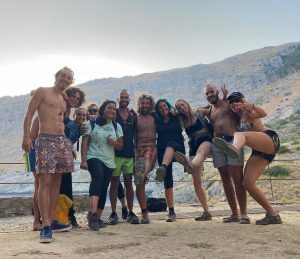Updated on Novembre 20, 2020
How we made our horticultural garden
Having a horticultural garden in our own house is a sustainable and environmental-friendly way to produce our aliments; furthermore we can reuse the organic rubbish as substrate in the ground.
In our case, we will make a garden with vegetables, aromatic herbs and ornamental flowers. Below we will explain the steps to follow from the beginning and processes such as cleaning, making rows and the preparation before planting. At this moment the ground is full of wild plants, compacted; we will learn how to distribute the aromatic herbs and vegetables together and show techniques to protect the soil and to water.
But how did you make your horticultural garden?
At this moment we have vegetables like onions, salads, zucchinis and peppers; flowers like daisies, begonia, sunflowers or dahlias and aromatic herbs like mint, salvia, iris or papyrus.
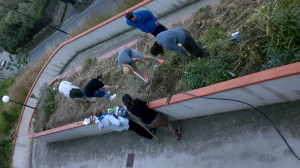
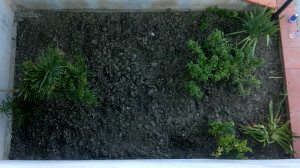
The first step was removing the vegetation that grew while the garden was abandoned. Then we had to loosen the soil. The ground needs to be ploughed to allow the drain and growth of the roots; besides, bigger stones were kept to divide the different part of our garden.
Before planting we divided the area taking into account the space needed for each species. Some species, like salad or onion, were first planted in a tray, and grew for long enough not to be destroyed by birds or the sun while other plants, like the flowers, were just spread on the ground as seeds. To place the young plants of vegetables we used a wooden stick, which makes a hole big enough to put the little plant into. Only one wild species that grew in our garden was left, the Borago, which is eatable.
The next step was watering. It is recommended to do it after sunset for 3 main reasons: first, to avoid water evaporation during the process; drops remaining on the surface of leaves can act like lenses with the direct sunlight, burning the plants; to avoid hydric stress, i.e the difficulty for plants to process photosynthesis and absorb the water contained in the ground at the same time.
After watering we covered the surface with the vegetation previously cut to maintain the humidity of the soil and protect it from direct radiation from the sun.
After all that work now we can say it was an awesome day, especially since everything has grown well and we even started eating our own vegetables and fruits.
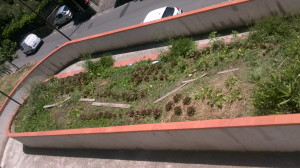
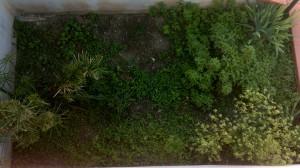
Did you know?
Daisy is not a flower, but a inflorescence; this latinism means “a flower in a flower”. The daisy is a group of flowers (of the same species) that evolved together to create the aspect of only one. The yellow part in the centre that looks like pollen is not; in fact it is a hundred of tiny flowers with their own pollen, and each petal, a flower that evolved to look like one.




